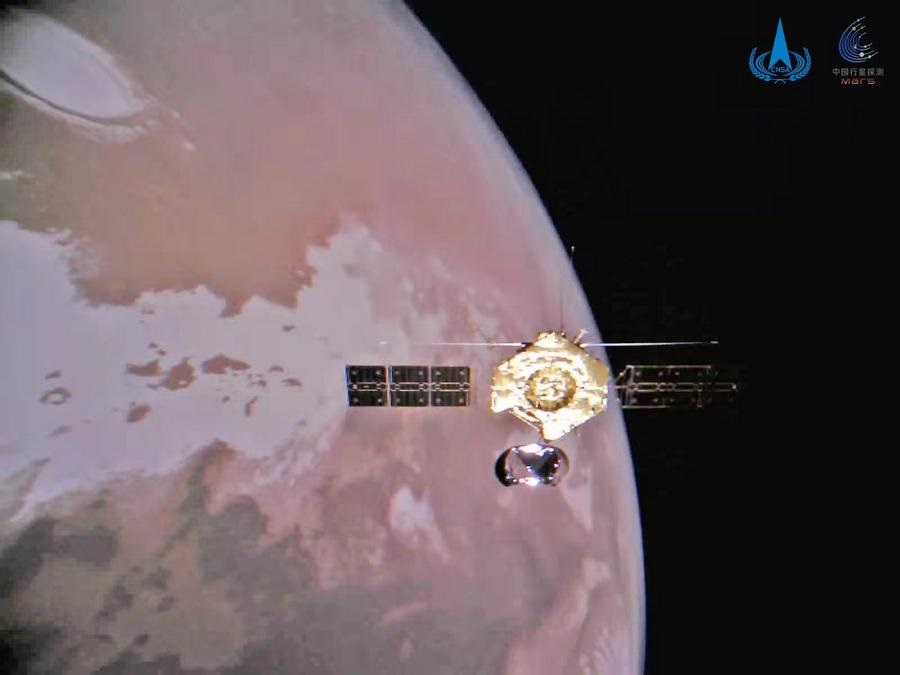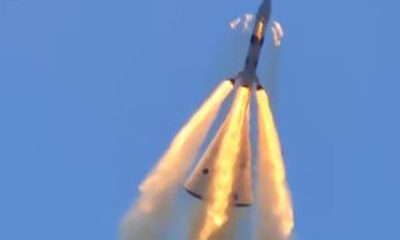China
တရုတ်နိုင်ငံက ၂၀၂၅ ခုနှစ်အတွင်း ရည်မှန်းချက်ပိုမိုကြီးမားသော အာကာသမစ်ရှင်များ လုပ်ဆောင်ရန် ရည်မှန်း

တရုတ်နိုင်ငံအနေဖြင့် ကမ္ဘာမြေအနီးရှိ ဂြိုဟ်သိမ်ဂြိုဟ်မွှား တစ်ခုဆီမှ နမူနာအသစ်များကို ကမ္ဘာမြေဆီသို့ ပြန်လည်သယ်ဆောင်မည့် မစ်ရှင်နှင့် အာကာသယာဉ်၊ ဒုံးပျံနှင့် ဂြိုဟ်တုအသစ်များကို ပွဲဦးထွက် ထုတ်ဖော်ပြသမှု အပါအဝင် ရည်မှန်းချက်ကြီးသော အာကာသမစ်ရှင် အများအပြားကို ၂၀၂၅ ခုနှစ်အတွင်း လုပ်ဆောင်မည်ဖြစ်ရာ ယင်းသည် အာကာသထဲအထိ နက်နက်ရှိုင်းရှိုင်း စူးစမ်းလေ့လာနိုင်သည့် စွမ်းရည်များကို တစ်ဆင့်တိုး၍ မြှင့်တင်ပေးမည် ဖြစ်သကဲ့သို့ ပိုမိုကောင်းမွန်သော စီးပွားဖြစ် အာကာသ ဝန်ဆောင်မှုများအတွက်လည်း ခိုင်မာသော အုတ်မြစ်တစ်ခုကို ချမှတ်ပေးလိမ့်မည်ဖြစ်သည်။
တရုတ်နိုင်ငံအနေဖြင့် 2016HO3 ဟု အမည်ဝှက်ပေးထားသော ကမ္ဘာမြေအနီးရှိ ဂြိုဟ်သိမ်ဂြိုဟ်မွှား တစ်ခုဆီမှ နမူနာများ ပြန်လည်သယ်ဆောင်မည့်မစ်ရှင်၊ အင်္ဂါဂြိုဟ်နှင့် ကြာသပတေးဂြိုဟ်အကြား ပင်မ ဂြိုဟ်သိမ်ခါးပတ်ရှိ 311P ဟု အမည်ဝှက်ပေးထားသော ကြယ်တံခွန်တစ်ခု၏ ပတ်လမ်းအတွင်း စူးစမ်းလေ့လာမှုများ လုပ်ဆောင်မည့် ထျန်းဝန်-၂ အာကာသ စူးစမ်းလေ့လာရေးယာဥ်ကို ယခုနှစ်အတွင်း လွှတ်တင်ရန် စီစဥ်ထားကြောင်း သိရသည်။ (Xinhua)
သတင်းအပြည့်အစုံကို ဖော်ပြပါလင့်ခ်တွင် ဝင်ရောက်ဖတ်ရှုနိုင်ပါသည်။ xhtxs.cn/0wr
……………………
(English Version)
China aims for more ambitious space missions in 2025
China is set to embark on a series of ambitious space missions in 2025, including a new sample return mission from a near-Earth asteroid, and the debut of an array of new spacecraft, rockets and satellites, which will further enhance its deep-space exploration capabilities and lay a solid foundation for better commercial space services.
China plans to launch the Tianwen-2 probe this year, which will carry out a sample return mission from a near-Earth asteroid coded 2016HO3 and then orbit explorations of a comet coded 311P in the main asteroid belt between Mars and Jupiter. xhtxs.cn/0wr
English Caption
Photo released on Jan. 1, 2022 by the China National Space Administration (CNSA) shows the Tianwen-1’s orbiter and Mars. (CNSA/Handout via Xinhua)






